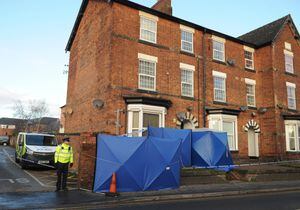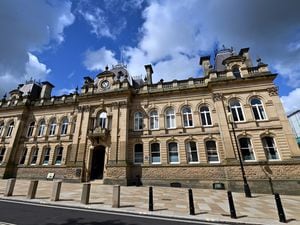Stafford-based London Bridge attacker may have 'gamed system' in prison
London Bridge attacker Usman Khan was an example of "false compliance" while in prison and may have "gamed the system", according to a new report warning terrorists could be becoming more extreme once behind bars.

Khan was living in Stafford on licence when he went to London to attend an event on rehabilitation at Fishmongers Hall and killed two people last November.
He was shot dead by police.
Khan had been released from prison only months before the attack.
The report warned terrorists may see their time in prison “as an opportunity” to become more extreme and prepare for attacks. It comes as the Government is pushing to increase sentences in the wake of the attack on London Bridge, and Streatham three months later.
Those attacks brought the sentencing and management of terrorists under close scrutiny.
Khan was released automatically in December 2018 after his initial indefinite sentence was downgraded on appeal, with the Parole Board having no say in the matter.
Research by the International Centre for the Study of Radicalisation (ICSR) found that at least five terror attacks have been plotted or carried out by serving and released prisoners in Britain since 2016, including London Bridge.

Concerns were also raised that terrorists, such as Khan, who was part of a terror cell based in Stoke-on-Trent before being jailed in 2012, had learned to work the system by posing as model inmates before returning to their old ways once they are out.
The 28-year-old had taken part in rehabilitation events while in prison and was considered a "success story who had turned his life around" before the attack, highlighting the difficulties faced by the security services in managing offenders and deciding who is fit to be released back into society.
While inside, he insisted he had changed his ways, writing: "There were many gaps in my knowledge but now I am on a new path and am learning to become a good Muslim. I would like a chance to prove to you that I will not cause harm to nobody in our society."
The report said that Khan may have “gamed the system” or relapsed following his release, but the deadly attack brought the effectiveness of offender management both inside and outside prison into question.
Participated
The attacker continued to co-operate with rehabilitation schemes once out on licence in Stafford and such was the lack of concern he was allowed to visit London on his own having "built up enough trust" with supervisors.
The report said: "Following his release, he also participated in the Desistance and Disengagement Programme, a new Government scheme that provides ‘mentoring, psychological support, theological and ideological advice’.
"He had also been complying with his probation conditions, meeting with his probation supervisor twice a week and wearing an ankle tag that reported his location.
"Khan’s movements while on probation were restricted, with set limits on where he could and could not go, and he had to stay in a bail hostel in Stafford. Yet he had built up enough trust with the authorities, having already made one accompanied visit to an event in London, that the authorities granted him permission to attend the Learning Together anniversary by himself."
Neighbours in Stafford were stunned to learn the London Bridge attacker had been living among them at flats on Wolverhampton Road, near the Star and Garter pub.
Pat McFadden, MP for Wolverhampton South East, told the Express & Star earlier this year that tougher sentences alone wouldn't remove the threat of terrorism as he called for more support for the security services.





